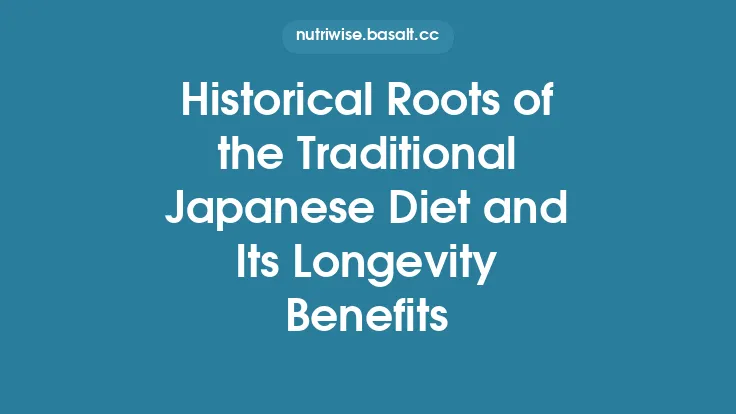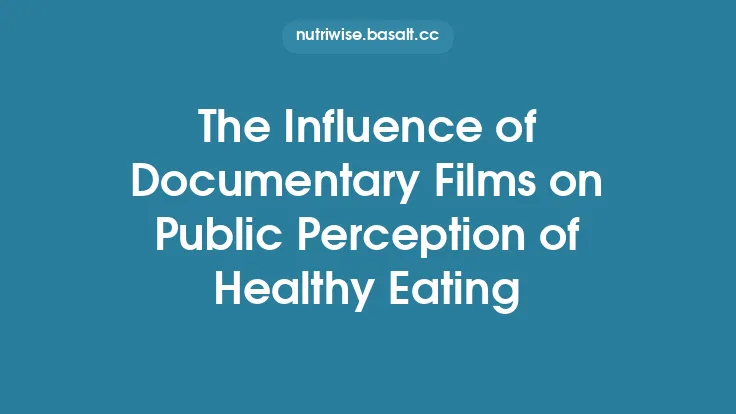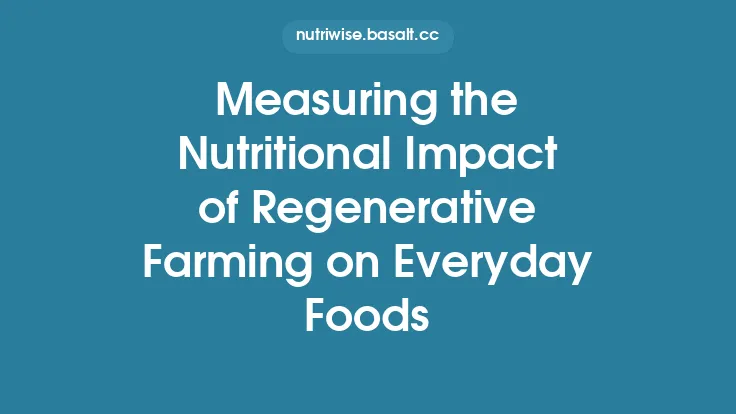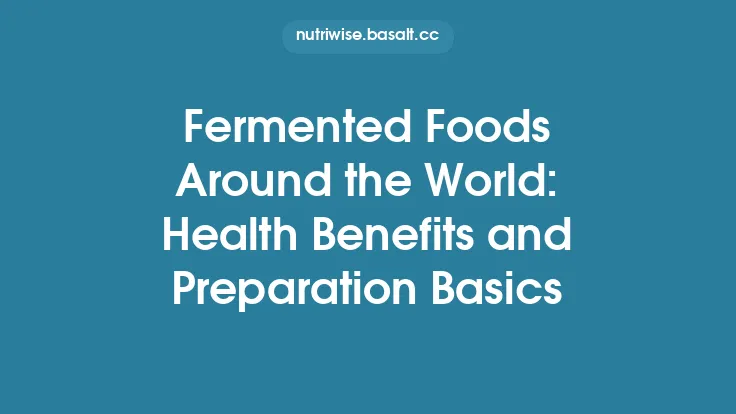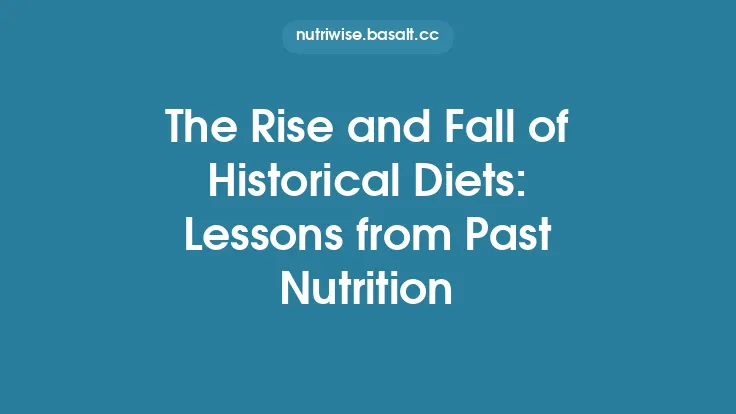The two World Wars of the twentieth century reshaped the way societies thought about food, nutrition, and the logistics of feeding entire populations under extreme stress. While the immediate goal of wartime rationing was to ensure that soldiers and civilians alike received enough calories to sustain the war effort, the policies and scientific insights that emerged left a lasting imprint on public health, food industry practices, and the cultural relationship with food. This article explores the origins, implementation, and long‑term consequences of wartime rationing, highlighting how the wars spurred advances in nutritional science, altered consumer behavior, and laid the groundwork for modern food policy.
The Pre‑War Nutritional Landscape
Before the outbreak of World War I, most industrialized nations relied on relatively abundant food supplies, but nutrition was still unevenly distributed. In the United Kingdom, for example, the average adult male consumed roughly 3,200 kcal per day, while many working‑class families struggled to meet even 2,500 kcal. In the United States, the Progressive Era had already seen the rise of nutrition education, with the first Recommended Dietary Allowances (RDAs) being drafted in the 1910s, though they were not yet widely implemented.
These pre‑war conditions set the stage for the dramatic shifts that would follow. Governments recognized that a well‑fed populace was essential not only for morale but also for maintaining industrial output and military readiness. Consequently, the wars became catalysts for systematic, state‑directed nutrition planning.
World War I: The First Large‑Scale Rationing Experiments
1. Early Measures and the “Food Control” Boards
When hostilities began in 1914, the United Kingdom established the Food Control Board (later the Ministry of Food) to monitor imports, prices, and distribution. The board introduced “price controls” on staples such as wheat, meat, and butter, aiming to curb inflation and prevent hoarding. Although formal ration cards were not yet issued, the government encouraged voluntary “meatless” and “wheatless” days to stretch supplies.
2. The Introduction of Ration Books
By 1917, the British government introduced the first ration books, allocating a fixed amount of sugar, tea, butter, and meat per person per week. The system was based on a “point” allocation: each household received a set number of points that could be exchanged for specific commodities. This method allowed for flexibility while ensuring that no family could exceed its share.
3. Nutritional Science Takes Center Stage
The war spurred the first systematic studies of the relationship between diet and health under scarcity. The British Medical Research Council (MRC) commissioned experiments on soldiers and civilians to determine the minimum caloric and protein requirements for maintaining work capacity. Their findings—approximately 2,800 kcal and 70 g of protein per day for an average adult male—became the basis for ration standards.
In the United States, the Food Administration, led by Herbert Hoover, promoted “Meatless Mondays” and “Wheatless Wednesdays.” The agency also published the first “Food Conservation” pamphlets, which included simple nutritional guidelines and recipes designed to stretch limited supplies.
4. Social and Cultural Impacts
Rationing altered everyday life in profound ways. Families learned to bake bread with lower wheat content, substitute margarine for butter, and stretch meat with off‑cuts and organ meats. Community “victory gardens” proliferated, providing fresh vegetables and reinforcing a sense of collective responsibility. These practices not only mitigated shortages but also introduced many households to a more varied, plant‑forward diet—a shift that would echo in post‑war nutrition advice.
Interwar Period: Consolidating Lessons Learned
The end of World I did not immediately dissolve the structures created during the conflict. Many governments retained food‑price controls and continued to fund nutrition research. The League of Nations established a “Food and Nutrition Committee,” which published the seminal 1929 report *Nutrition and the War Effort*, summarizing wartime data and recommending that nations maintain strategic food reserves.
In the United Kingdom, the Ministry of Health incorporated wartime findings into the 1930 *Dietary Recommendations for the General Population*, emphasizing adequate protein, vitamin C, and iron—nutrients that had been identified as most vulnerable during rationing.
World War II: Rationing on an Unprecedented Scale
World War II amplified and refined the rationing mechanisms pioneered a decade earlier. The global nature of the conflict, combined with more sophisticated logistics and a deeper scientific understanding of nutrition, produced a comprehensive system that affected virtually every aspect of civilian life.
1. The British Ministry of Food and the “Ration Book”
In 1939, the British Ministry of Food introduced a standardized ration book that allocated weekly allowances for:
| Commodity | Adult Weekly Allocation | Child Allocation |
|---|---|---|
| Meat (including off‑cuts) | 1 lb 8 oz | 0.5 lb |
| Butter | 2 lb | 1 lb |
| Sugar | 8 lb | 4 lb |
| Milk | 4 pints | 2 pints |
| Eggs | 6 | 3 |
| Cheese | 2 lb | 1 lb |
| Tea | 2 oz | 1 oz |
| Cooking Fat (lard/oil) | 2 lb | 1 lb |
The allocation was adjusted periodically based on import levels, domestic production, and military needs. Importantly, the system was *universal*: every citizen, regardless of income, received the same basic ration, thereby reducing socioeconomic disparities in food access.
2. Nutritional Standards and the “Balanced Diet” Campaign
The Ministry of Food, in collaboration with the Royal Society of Medicine, produced a series of pamphlets titled *The Balanced Diet*, which outlined the five food groups (meat, dairy, cereals, fruits/vegetables, and fats) and recommended portion sizes that could be met within the ration limits. These guidelines were among the first to translate scientific nutrient recommendations into practical, everyday language for the general public.
The United States, through the Office of Price Administration (OPA), introduced a similar system of ration coupons for items such as gasoline, tires, and certain foods (e.g., meat, butter, sugar). The OPA also launched the *Victory Garden* program, encouraging citizens to grow up to 25 % of their own vegetable consumption.
3. Advances in Food Technology
Wartime scarcity accelerated innovations in food preservation and fortification:
- Canning and Dehydration: To extend shelf life, governments invested heavily in canning plants and dehydration facilities. This led to the mass production of canned fruits, vegetables, and meats, which remained a staple in post‑war diets.
- Fortified Foods: Recognizing the risk of micronutrient deficiencies, especially vitamin D and iron, the British government mandated the fortification of margarine with vitamin D and added iron to wheat flour. The United States introduced *Enriched Flour* in 1941, adding thiamine, riboflavin, niacin, and iron.
- Synthetic Nutrients: The war spurred research into synthetic vitamins, culminating in the commercial production of vitamin C (ascorbic acid) and vitamin D (ergocalciferol) in the early 1940s. These became essential supplements for populations with limited fresh produce.
4. The Role of Women and Home Economics
With a large proportion of men serving overseas, women assumed responsibility for household food management. Home economics courses, broadcast on radio and later television, taught efficient cooking techniques, such as “stretching” meat with breadcrumbs, using *“soup stock”* made from vegetable scraps, and baking with reduced sugar. These lessons not only helped meet ration limits but also empowered women with a new set of culinary skills that persisted after the war.
5. Psychological and Social Dimensions
Rationing was not merely a logistical exercise; it was also a tool for maintaining morale. The Ministry of Food organized *“Make Do and Mend”* campaigns, encouraging citizens to repair clothing and reuse food containers. Public celebrations, such as *“Victory Meals”* featuring the limited but symbolic inclusion of a piece of meat or a slice of cake, reinforced a collective identity centered on sacrifice and resilience.
Post‑War Legacies: From Rationing to Modern Food Policy
1. Institutionalization of Nutrition Guidelines
The data collected during the wars formed the empirical backbone for the first official dietary guidelines in many countries. In 1941, the United States released the *Recommended Dietary Allowances (RDAs), directly informed by wartime research on caloric and protein needs. The United Kingdom’s 1942 Dietary Recommendations* similarly reflected the Ministry of Food’s findings.
These guidelines evolved into the modern *Food Pyramid (later the Eatwell Plate in the UK) and the Dietary Guidelines for Americans*, underscoring the lasting influence of wartime nutrition science.
2. Food Fortification as a Public Health Tool
The success of wartime fortification programs demonstrated that large‑scale nutrient enrichment could be achieved without consumer resistance. Consequently, many countries institutionalized fortification policies:
- United States: Mandatory fortification of flour with iron and B vitamins; later, folic acid fortification of grain products (1998) to reduce neural‑tube defects.
- United Kingdom: Ongoing fortification of margarine with vitamin D and the addition of iodine to salt (post‑war, 1950s).
These policies are now considered cornerstone public‑health interventions, reducing the prevalence of micronutrient deficiencies worldwide.
3. The Rise of the Processed Food Industry
The wartime need for shelf‑stable, transportable foods accelerated the growth of the processed food sector. Companies that had supplied canned goods to the military pivoted to civilian markets, introducing products such as:
- Canned soups and stews
- Instant powdered milk
- Pre‑cooked, vacuum‑sealed meats (e.g., Spam)
While these foods provided convenience, they also introduced higher levels of sodium and preservatives into the average diet—a factor that later public‑health campaigns would target.
4. Consumer Attitudes Toward Food Waste and Sustainability
The “Make Do and Mend” ethos cultivated during the wars left an enduring cultural memory of frugality. In the post‑war era, this translated into:
- Increased home cooking: A decline in dining out during the 1950s and 1960s, as families continued to prepare meals from scratch.
- Awareness of food waste: Early environmental movements in the 1970s cited wartime rationing as a model for responsible consumption.
Today, the concept of “food resilience”—the ability of a food system to withstand shocks—draws directly from wartime experiences, informing contemporary discussions on climate change, supply‑chain disruptions, and pandemic preparedness.
5. Legacy in Public Health Nutrition Education
The wartime campaigns demonstrated the power of clear, government‑backed messaging. Modern nutrition education programs—whether through school curricula, public service announcements, or digital platforms—still employ the same principles: simple visual guides, practical recipes, and a focus on achievable daily targets.
Comparative Overview: World War I vs. World War II Rationing
| Aspect | World War I | World War II |
|---|---|---|
| Scope of Rationing | Limited to sugar, meat, butter; voluntary “meatless days” | Comprehensive weekly ration books covering most staples |
| Scientific Basis | Early studies on minimum caloric needs; limited micronutrient focus | Robust research on macronutrients and micronutrients; fortification policies |
| Administration | Food Control Boards; point‑based allocation | Centralized Ministry of Food; universal ration books |
| Public Messaging | Posters encouraging “food conservation” | Detailed *Balanced Diet* pamphlets, radio programs, home‑economics classes |
| Technological Innovations | Expansion of canning | Large‑scale fortification, synthetic vitamin production, dehydration |
| Social Programs | Victory gardens (small scale) | Nationwide Victory Garden campaigns, “Make Do and Mend” initiatives |
| Post‑War Impact | Foundations for interwar nutrition research | Direct influence on RDAs, modern fortification, processed food industry |
Lessons for Contemporary Food Security
- Data‑Driven Policy: Wartime nutrition policies were successful because they were grounded in systematic research. Modern food security strategies should similarly rely on real‑time data collection (e.g., food‑balance sheets, biometric monitoring) to adjust allocations during crises.
- Universal Access: The egalitarian nature of ration books reduced inequality. Current debates on universal basic food provisions or “food vouchers” echo this principle, suggesting that equitable distribution can improve both health outcomes and social cohesion.
- Fortification as a Preventive Measure: The wartime success of vitamin and mineral fortification demonstrates that population‑wide interventions can be both cost‑effective and widely accepted, especially when paired with transparent communication.
- Flexibility and Redundancy: The diversification of food sources—home gardens, preserved foods, and imported staples—provided resilience against supply shocks. Modern food systems should incorporate similar redundancies, such as urban agriculture and decentralized processing facilities.
- Behavioral Change Through Education: The sustained impact of wartime nutrition education underscores the importance of clear, actionable messaging. Contemporary public‑health campaigns can draw on this legacy by integrating nutrition guidance into everyday media and digital platforms.
Concluding Reflections
The World Wars forced nations to confront the stark reality that food is both a strategic resource and a public‑health cornerstone. Rationing, far from being a mere bureaucratic exercise, became a catalyst for scientific discovery, technological innovation, and cultural transformation. The policies devised under the pressure of global conflict laid the groundwork for modern nutrition standards, fortified food supplies, and a collective consciousness about food waste and sustainability.
While the hardships of those periods are not to be romanticized, the enduring lessons—particularly the value of evidence‑based policy, equitable distribution, and public education—remain profoundly relevant. As the world faces new challenges, from climate‑induced crop failures to pandemic‑related supply disruptions, the legacy of wartime rationing offers a blueprint for building resilient, health‑focused food systems that can endure even the most severe shocks.

